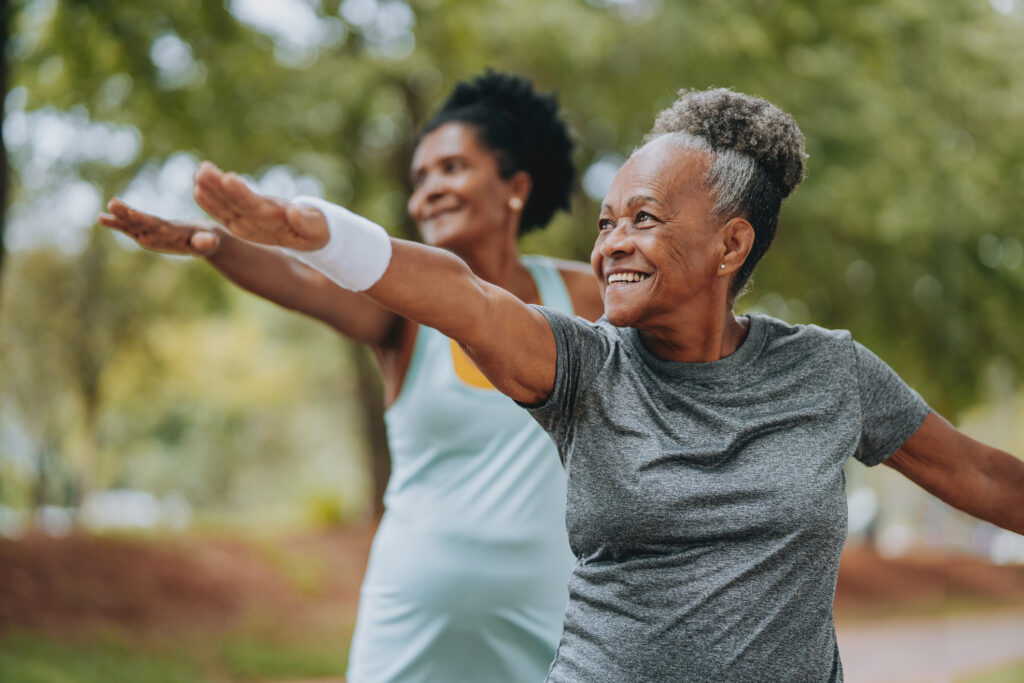Capitalizing on Accelerometry to Measure Performance Fatigability in Older Adults

Fatigability is not a new concept in the exercise physiology realm. Researchers have long paired physical activity measures with ratings of perceived exertion or contractions of isolated muscle groups during tasks to quantify self-reported or muscle fatigability. Of late, the term “fatigability” has evolved and is widely used in aging research to represent a whole-body trait of […]
Eccentric Contractions Are Responsible for Muscle Damage and Neuromuscular Fatigue

Many of our functional daily and exercise activities include both concentric (shortening) and eccentric (lengthening) muscle contractions (actions). However, eccentric-only or accentuated eccentric contractions are also commonly performed in resistance exercises. It is well known that exercises consisting of high-intensity and/or a large number of eccentric contractions induce delayed-onset muscle soreness and prolonged decreases in […]
Associations between Physical Health and Brain Health: Uncovering the Brain-Fitness-Adiposity Relationship in Children

Childhood obesity is an epidemic affecting over 340 million youth worldwide, with rates continuing to increase each year. Importantly, childhood obesity does not occur in isolation, as rates of physical inactivity are also increasing, with children and teens being less physically active now than in the past. These areas of public health are incredibly interrelated, […]
Overall Physical Activity or Intensity of Activity: Which Is More Important for Cardiometabolic Health?

Cardiometabolic risk describes a collection of factors known to increase the likelihood of cardiovascular disease. It includes lipid and glucose metabolism as well as adiposity and hypertension. We know that being more physically active is associated with lower cardiometabolic risk. However, it is not clear whether more specific or tailored physical activity guidance can be […]
Resistance Exercise Increases Gastrointestinal Symptoms, Markers of Gut Permeability, and Damage in Resistance-Trained Adults

Gastrointestinal (GI) discomfort can occur as an unfortunate byproduct of physical exercise. While this phenomenon has been thoroughly outlined in endurance athletes, only one study to date has measured and reported increased markers of GI injury following resistance exercise that coincided with decreased nutrient absorption. Grand View Market research estimates the global digestive health market will reach […]
Adolescents with Sport-Related Concussion Recover Faster When They Adhere to an Aerobic Exercise Prescription

Patients with sport-related concussion have traditionally been advised to employ strict physical and cognitive rest until all of their symptoms resolve, i.e., until they become asymptomatic. This “cocoon therapy” was based largely upon animal research showing that early uncontrolled physical activity delayed recovery from simulated concussion. Emerging evidence over the past decade, however, demonstrates that there is […]
Does Working Out Result in T Cell Mitochondrial Gains?

The positive effects of aerobic exercise training on skeletal muscle metabolism are well recognized. Exercise also leads to beneficial metabolic adaptations in other organs, including the brain, liver, kidneys and adipose tissue. However, the effects of exercise on immune cell metabolism are largely unknown. Immune cells that circulate throughout the body are exposed to exercise-associated […]
Vertical Loading Rate Should Not Be Used as a Predictor of Running Injury

Running is a popular form of exercise due to its health benefits and low economic cost; however, the prevalence of running-related injuries is on the rise. With most running injuries classified as overuse injuries due to excessive, repetitive loading, clinicians and researchers are looking to develop measures of this loading to assess a runner’s injury […]
Meeting the 50th Percentile for 24-hour Movement Helps Cognitive Function

Alzheimer’s disease and related dementias are debilitating conditions leading to impaired cognitive processes and worsening physical functioning. They place significant burden on caregivers and health care systems. Roughly 15 million cases of cognitive impairment and Alzheimer’s disease in the U.S. are projected by 2060. While there are no medical treatments to delay Alzheimer’s disease progression, […]
Computational Neuroscience Approaches to Exercise Behaviors in Older Adults

Engagement in physical exercise has shown widespread benefits on cardiovascular, physical, emotional and cognitive health in older adults. However, initiating and sustaining an exercise routine over the long term (e.g., six months or more) is incredibly challenging. Our historical understanding of the factors that determine engagement in physical exercise comes from psychological and psychosocial theories, […]
